15.2 Personality as Adaptation to Life Conditions
10
How does an ultimate explanation of personality variability differ from a proximate one?
Why are people different from one another in personality? Recall from Chapter 3 that psychologists and biologists distinguish between two different types of answers to why questions. One type, referred to as proximate explanation, focuses on causal mechanisms that operate in the lifetime of the individual to produce the phenomenon in question. Proximate explanations of personality differences focus on ways by which differing genes and experiences work to make us different. The other type of answer, referred to as distal explanation, focuses on function, or evolutionary survival value, rather than mechanisms. How might personality differences help individuals survive longer and produce more offspring than they would if all individuals were identical in personality? Why were genetic, developmental, and learning mechanisms that ensure diversity in personality favored by natural selection over mechanisms that would have made us more uniform? These are the questions to which we turn now.
585
Advantages of Being Different from One Another
It is conceivable that variability in personality has no adaptive advantage. Perhaps the kinds of differences that personality theorists study simply represent a degree of randomness that could not be weeded out by natural selection. In fact, some evolutionary psychologists have viewed personality traits as by-products or “noise” that have not been selected through evolution (Réale et al., 2007; Tooby & Cosmides, 1992, 2005). Other evolutionary psychologists think differently, believing that individual differences in personality provide variation among people that may be well suited for a species that lives in a “multi-niche” environment. In this view, natural selection hedges its bets, producing organisms with a range of cognitive and behavioral disposition that may be adaptive for the range of environments it may encounter (Buss, 2009; Ellis et al., 2006). We firmly concur with this latter perspective.
As noted in Chapter 3, sexual reproduction itself seems to be an adaptation that ensures the diversity of offspring. Mixing half of one parent’s genes in a random manner with half of the other parent’s genes leads to an essentially infinite number of possible new gene combinations in the offspring. From a purely biome-chanical point of view, cloning is a far simpler and less costly form of reproduction than is sexual reproduction, so it is hard to imagine why sexual reproduction would have evolved and persisted if there were no advantage in diversity. It seems equally unlikely that learning mechanisms and other developmental mechanisms that lead us to become different in response to different environmental conditions would have evolved if they produced no survival advantage.
If individual differences in personality are adaptive for survival, we might expect to find them throughout the animal kingdom, and in fact we do. Research on dozens of species of other animals, ranging from ants to fish to chimpanzees, has revealed, in every species tested, individual differences in behavioral styles that can be described in terms similar to those that are used to describe human personality differences (Gosling, 2001; Uher, 2008). Many dimensions of personality identified in nonhuman animals have equivalents in the five-factor model (Gosling & John, 1999; Figueredo & King, 2001). For example, extraversion, neuroticism, and agreeableness have been identified in a number of species, although conscientiousness has only been identified in chimpanzees and humans (see Figueredo et al., 2005).
The conclusion that nonhuman animals have personality probably does not surprise anyone who has owned a dog or a cat. We see personality in our pets. In fact, this is likely one reason these animals were domesticated to be pets. However, the observance of some of the same dimensions of personality in nonhuman animals that we see in ourselves suggests that this variation is not random, that different personalities are likely adapted for certain environmental conditions, and that personality in humans likely has a long evolutionary history. Personality appears to be a basic, biological aspect of animal life.
Diversifying One’s Investment in Offspring
11
How does an analogy to financial investment explain the value of producing offspring who differ from one another in personality?
One way to think about the value of genetic diversity and personality differences is through an analogy between producing offspring and investing money (Miller, 1997). Investors who put all their money into one company risk going broke if that company suddenly collapses. Smart investors diversify: They invest in a variety of stocks, bonds, and other financial instruments, which are likely to respond differently to economic forces, so that when one goes down, another goes up or at least doesn’t go down as rapidly as the first. Diversified investment greatly reduces the potential for dramatic loss while maintaining the potential for substantial gains over the long run.
586
From the perspective of evolution by natural selection, producing offspring is an investment, the goal of which is to send multiple copies of one’s genes into future generations. Since conditions of survival and reproduction vary in unpredictable ways over time, the chance that an individual’s genes will die out can be reduced if the offspring differ from one another in some of their characteristics, including their behavioral characteristics. Therefore, over the course of evolution, mechanisms that ensure diversity of personality in offspring—even the random diversity that results from genetic mixing in sexual reproduction—would be favored by natural selection.
Studies of the Bold-Cautious Dimension in Fish
12
How has the bold-cautious dimension been studied in fish? What findings support the view that there is an evolutionary advantage in diversity?
The most commonly studied dimension of personality in nonhuman animals is that of boldness versus cautiousness (Gosling, 2001; Nettle, 2006). This dimension has been especially well documented and studied in various fish species, including pumpkinseed sunfish (Wilson, 1998), perch (Magnhagen & Staffan, 2005), and three-spined sticklebacks (Ward et al., 2004).
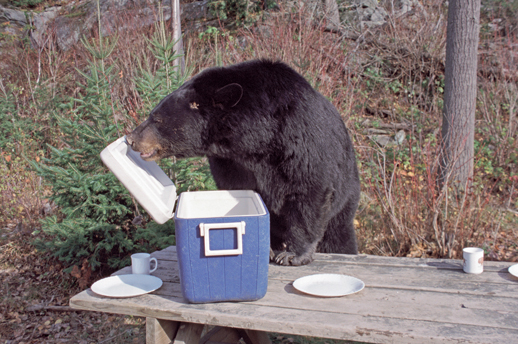
In one series of studies, David Sloan Wilson and his colleagues (1993; Wilson, 1998) categorized pumpkinseed sunfish as bold or cautious on the basis of their tendency to approach (and get caught in) or to avoid wire traps placed in their habitat in a small experimental pond. Those caught by a trap were considered bold, and those that avoided the traps (and were later caught with a net) were considered cautious. Subsequent study of the two groups of fish in laboratory tanks demonstrated the consistency and generality of the trait difference.
Compared with the cautious fish, the bold fish (a) adapted more readily to the tank, as shown by a quicker return to normal feeding, (b) more frequently swam off on their own rather than staying close to the other fish, and (c) were more likely to approach rather than avoid a human observer. In addition, analysis of the stomach contents of freshly caught bold and cautious fish revealed a striking difference in their diets. The bold fish had eaten far more copepods (tiny crustaceans), which were most plentiful in the areas of the pond where vegetation was least dense and the risk of predation by fish and birds was greatest.
One can well imagine the advantages and disadvantages of being either cautious or bold, among pumpkinseeds or any other vertebrate species. Caution reduces the risk of sudden death through predation or accident, but it also confines one’s life to a relatively narrow portion of the available environment. Boldness allows one to explore new areas and locate foods that cautious individuals would not find, though at increased risk. Consistent with this view is the finding, with stickleback fish, that bold individuals eat more and grow more rapidly than do cautious individuals (Ward et al., 2004).
Boldness may be especially valuable when the narrow niche occupied by cautious individuals is nearly filled, so the risks entailed in exploring new objects, areas, and life strategies are offset by the potential for finding new, needed resources. Parents who, through the unconscious process of natural selection, produce offspring that differ from one another in their degree of caution or boldness are hedging their bets, much like investors who invest in a combination of conservative bonds and high-risk stocks.
There is also evidence that individual fish can become either bolder or more cautious, depending on the number of other bold or cautious fish in their environment. In one experiment, with perch, cautious fish became bolder when they were grouped only with other cautious fish in a large aquarium, and bold fish became more cautious when grouped only with other bold fish (Magnhagen & Staffan, 2005). Such context-driven changes in personality are apparently adaptive: If the “cautious niche” is filled by many cautious individuals, then it is better to become bolder and explore new realms. Conversely, if the “bold niche” is filled by many bold individuals, who are spending little of their time in the relatively safe areas so that food is still available in those areas, then it is better to be cautious and remain where it is safe.
587
The Big Five Traits as Alternative Problem-Solving Strategies
13
How might both heritable and nonheritable variations in the Big Five dimensions be explained in terms of alternative life strategies?
From an evolutionary perspective, personality traits in humans—including the Big Five—can be thought of as alternative general strategies for solving problems related to survival and reproduction (Buss, 1996; Nettle, 2006). Consider, for example, the trait dimension of extraversion-introversion. Research has shown that extraverts are more likely than introverts to (a) have many sexual partners, (b) get divorced, and (c) become hospitalized because of accidents (Nettle, 2005). From these data alone, you can well imagine ways in which extraversion could, depending on environmental conditions, either increase or decrease the number of viable offspring a person produces. The extraversion-introversion dimension in people is in some ways comparable to the bold-cautious dimension in other species.
Similar analyses can be made of the other Big Five trait dimensions. In terms of psychological health and societal well-being, low neuroticism (high emotional stability), high openness, high agreeableness, and high conscientiousness seem to most of us to be more desirable than their opposites. However, you can imagine conditions in which the opposite ends of these dimensions might better promote survival and reproduction.
In truly dangerous conditions, the worry and vigilance shown by individuals high in neuroticism could save lives. In some social situations, the conservative values and closed-mindedness of those low in openness could lead to more stable family lives and more children than would be achieved by persons high in openness. Much as we all admire agreeableness, we must admit that disagreeable people sometimes do get their way, and in some life conditions this could happen often enough to make meanness more viable, in evolutionary terms, than niceness. Conscientiousness has to do with pursuing long-term goals and not being distracted by short-term impulses, but in some life conditions long-term goals are not likely to work out anyway and an opportunistic, impulsive approach to life could be more conducive to survival and reproduction.
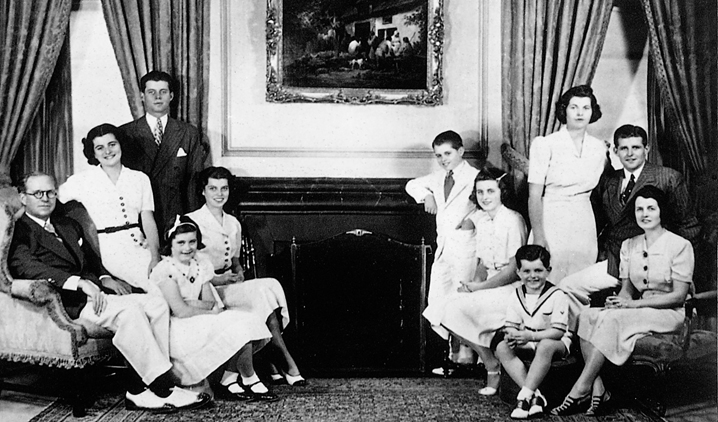
The finding that individual differences on trait dimensions are partly heritable and partly the product of environmental experience is also consistent with the evolutionary perspective. In an environment that varies unpredictably, the chances that at least some offspring will survive are enhanced if the offspring are genetically inclined toward different life strategies. Genetic inclinations need to be flexible, however, so that individuals can move along a personality dimension in a direction compatible with their life situation. Perch that are genetically inclined to be cautious and people who are genetically inclined toward introversion can become more bold and extraverted if their condition of life promotes or requires such adaptation. (If I [Peter Gray] had to make my living selling books rather than writing them, then even I, a prototypical introvert, might become a bit less introverted).
588
Differential Susceptibility to Environmental Influence
14
What is meant by orchid and dandelion children, and how do they relate to the idea of differential susceptibility to environmental influences?
Personality traits are viewed as relatively stable characteristics of a person. Although context clearly affects how we behave, when we speak of “personality traits” we think of relatively enduring characteristics of a person in terms of how they deal with the world. A person is “extraverted,” “open to experience,” or “aggressive.” A trait implies stability, a degree of permanency about an individual. However, researchers have discovered one trait that is associated not with stability but with change: differential susceptibility to environmental influence (Belsky & Pluess, 2009; Pluess & Belsky, 2012a, 2012b; Pluess et al., 2013).
Jay Belsky and his colleagues (2007; Belsky, 2005) have proposed that children with fearful, anxious, and “difficult” dispositions are more sensitive to the effects of parenting than other children (see Gilissen et al., 2008; Kochanska, 1993). According to Belsky, such environmentally sensitive children will readily change their behavior and personalities to novel environments, both positive (lots of family support) and negative (father absence, little family support). As a result, these children may fare especially poorly in less-than-optimal environments, but do particularly well in supportive environments. In other words, such children are affected by their environment both for better and for worse (Boyce & Ellis, 2005; Ellis & Boyce, 2011). In contrast, other children are more stable and less influenced by extreme environments.
Bruce Ellis and W. Thomas Boyce (2008) described sensitive children (children who are biologically sensitive to context to use their term) as orchid children. Like orchids, when they receive loving care they flourish, but they quickly wilt when the environment is not supportive. In contrast, dandelion children can survive, and perhaps thrive, in any environment. Through natural selection, parents can unwittingly hedge their bets by producing both types of children, some who will be receptive to change brought about by unanticipated environments, and others who will thrive in an “expected” environment. The relation between positive and negative outcomes in terms of psychological functioning for sensitive and less sensitive children is illustrated in Figure 15.4.
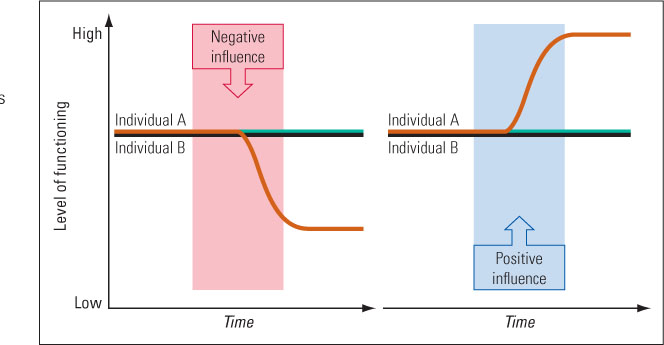
(Adapted from Pluess & Belsky, 2012b.)
589
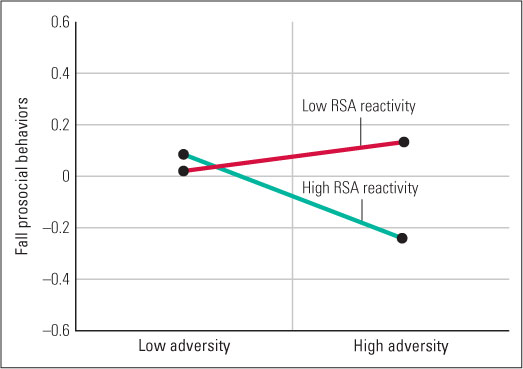
(Based on data from Obradovic et al., 2010.)
Differential susceptibility to environmental influence can be seen in studies assessing the psychological outcomes of highly sensitive and less-sensitive children, living in high-stress or low-stress home environments. For example, in one study by Jelena Obradovic and her colleagues (2010), 5- to 6-year-old children were classified as having high or low neurobiological stress reactivity based on their respiratory sinus arrhythmia (RSA), which is a measure of the nervous system’s response to stress reflected in variation in heart rate during the respiratory cycle. Changes in RSA are a measure of children’s ability to regulate reactions to positive and negative environmental stimuli. Children were further classified with respect to home adversity, with adversity being based on measures of family financial stress, maternal depression, and use of harsh parenting techniques, among others. Measures of psychological adjustment included externalizing behavior (for example, acting out, conduct disorder, overt hostility), prosocial behaviors, and school performance. The researchers reported that children high in stress reactivity (the highly sensitive, or orchid, children) displayed poorer adjustment (increased externalizing behavior, decreased prosocial behavior, poor school performance) when growing up in high-adversity environments, but better adjustment when growing up in low-adversity environments. The less-sensitive children (the dandelion children) displayed less change for most measures as a result of level of adversity. This pattern is displayed for prosocial behaviors in Figure 15.5. Similar patterns of results have been reported with respect to respiratory infections in high- and low-reactive preschoolers living in high-or low-stress homes (Boyce et al., 1995), and for psychological outcomes in response to supportive and less-supportive parenting for temperamentally prone-to-distress (highly sensitive) infants (Poehlmann et al., 2012).
Behavioral genetic research has identified a gene associated with susceptibility to parental influence (Bakermans-Kranenburg et al., 2008; Goldberg et al., 2013). In one study, 1- to 3-year-old children with high levels of externalizing behavior (for example, conduct disorder) took part in a “positive parenting” program. One year after completing the program, children who had one version of an allele associated with a dopamine receptor showed significant reductions in externalizing behavior, relative to children in a control group who did not participate in the positive-parenting program. In contrast, children with a different allele displayed no change in externalizing behavior.
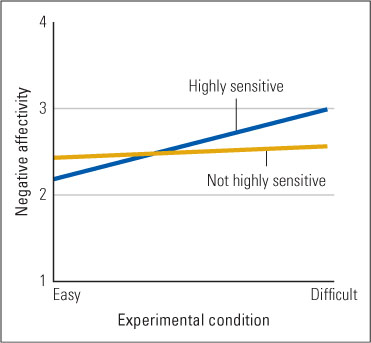
(Based on data from Aron, E., Aron, A., & Davies, 2005.)
In research from a more traditional “personality” tradition, Elaine Aron and her colleagues have identified a highly sensitive personality (HSP) trait, in which people are more aware of subtleties in their surroundings, process experiences more deeply, and are more easily overwhelmed in highly stimulating environments (Aron & Aron, 1997; Aron et al., 2005, 2012). Elaine Aron and Arthur Aron (1997) developed a questionnaire to identify highly sensitive people. Examples of items on the questionnaire are: “I notice when small things have changed in my environment,” “I don’t like loud noises,” “I find it unpleasant to have a lot going on at once,” and “When someone observes me I get nervous. This makes me perform worse than normal.” Based on such questionnaires, about 20 percent of people can be described as highly sensitive. Like the children described in the study by Obradovic and her colleagues (2010), such highly sensitive people are more affected by both positive and negative experiences. For example, in one study, college students rated high or low in sensitivity performed either an easy or a difficult task (performing either well or poorly on a supposed test of reasoning abilities, which was “fixed” by the experimenters). The subjects were then given a brief personality survey, with key questions relating to negative emotions (feeling “sad,” “anxious” and “depressed”). The results can be seen in Figure 15.6. The highly sensitive college students scored the lowest in negative affectivity in the “easy” condition and the highest in the “difficult” condition. In contrast, the college students who were rated as “not highly sensitive” did not vary in their assessments of negative emotions in the two conditions.
590
Adapting to the Family Environment
The first social environment to which most new human beings must adapt is that of the family into which they are born. The first view of other people, the first attempts at communication, the first emotional attachments, the first strivings for acceptance and approval, and the first competitions with others for resources occur most often within the context of the family. Children come into the world with nervous systems predisposed for behaving in certain ways, but those ways of behaving are first exercised and built upon within the family.
Yet, some psychologists contend that the family environment plays little or no role in shaping personality (Harris, 1998; Rowe, 1994). That contention stems primarily from the research indicating that people who were raised in the same home score, on average, just about as differently from one another on personality tests as do equally related people who were raised in different homes. To the degree that siblings are similar to one another in global personality traits, that similarity seems to come mainly from their shared genes, not from their shared home environment.
One response to such findings and arguments has been to suggest that siblings raised in the same home, by the same parents, might nevertheless experience quite different environments (Dunn & Plomin, 1990; Vernon et al., 1997). The same family may influence two siblings in different ways, causing divergence in personalities as often as it causes convergence. Chance events may play a role. For example, one child may have an accident or extended illness that leads to extensive care from the parents, not given to the other child. In other cases pre-existing differences between siblings may lead to differential parental responses, which magnify the pre-existing differences. For example, one child may become labeled as the “good child” and the other as the “problem child,” and these may be associated with parental responses that cause the labels to become self-fulfilling prophesies. Pre-existing personality differences might also lead siblings to interpret the same objective events quite differently, with different consequences for their further development. For example, a parent’s persistent demands that chores be done might be understood by one child as a caring act designed to instill good work habits and by another as harsh discipline. There is evidence that siblings indeed do have different family experiences for all these kinds of reasons (Dunn & Plomin, 1990).
Sibling Contrast: Carving Out a Unique Niche Within the Family

Pre-existing small differences between siblings may become exaggerated in part because siblings tend to define themselves as different from one another and tend to accentuate those differences through their own behavioral choices (Lalumière et al., 1996). When people are asked to describe their brother or sister, they commonly begin by saying, in effect, “Oh, he (or she) is entirely different from me,” and then proceed to point out how (Dunn & Plomin, 1990). Parents likewise tend to focus more on differences than on similarities when they describe two or more of their children (Schachter, 1982). This within-family emphasis on the differences between siblings is referred to as sibling contrast.
Possibly related to sibling contrast is split-parent identification, defined as a tendency for each of two siblings to identify with a different one of their two parents. If the first child identifies more strongly with the mother, the second typically identifies more strongly with the father, and vice versa. Sibling contrast and split-parent identification have been documented as highly reliable phenomena in questionnaires filled out by parents as well as in those filled out by the siblings themselves (Schachter, 1982).
591
15
How might sibling contrast and split-parent identification be useful in reducing sibling rivalry and diversifying parental investment?
Why do family members accentuate the differences rather than the similarities between siblings? A possible answer, proposed by Frances Schachter (1982), is that sibling contrast and split-parent identification are devices by which parents and children consciously or unconsciously strive to reduce sibling rivalry, which can be highly disruptive to family functioning. If siblings are seen by themselves and their parents as having very different abilities, needs, and dispositions, then the siblings are less likely to compete with one another and more likely to be valued and rewarded separately for their unique characteristics.
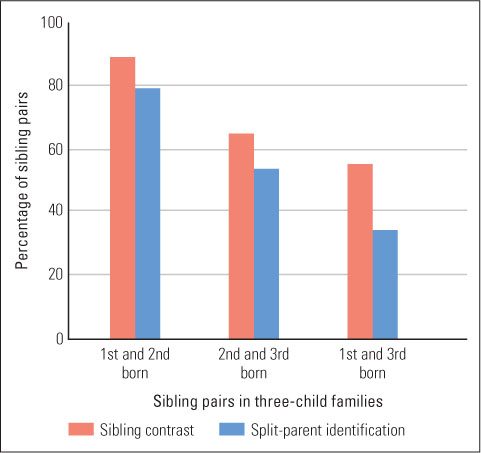
(Based on data from Schachter, 1982.)
If Joan is understood to be reserved and scholarly and her sister Mary is understood to be outgoing and athletic, then Joan and Mary can be appreciated by their parents and by each other for their separate traits rather than viewed as competitors on the same dimension—a competition that one of them would have to lose. From an evolutionary perspective, such differentiation may promote the survival of the two siblings and other members of their family not only by reducing rivalry but also by diversifying the parental investment (Lalumière et al., 1996; Sulloway, 1996). To the degree that Joan and Mary move into different life niches, they will compete less with each other for limited resources both within the family and in the larger environment outside the family, and they may develop separate skills through which they can help each other and the family as a whole.
In support of the view that sibling contrast and split-parent identification serve to reduce sibling rivalry, Schachter (1982) found that both phenomena are much stronger for adjacent pairs of siblings than for pairs who are separated in birth order (see Figure 15.7) and stronger for same-sex pairs of siblings than for opposite-sex pairs. Other researchers have also found greater sibling contrast for siblings who are close in age than for those who are more distant in age (Feinberg & Hetherington, 2000). It seems reasonable that siblings who are the same sex, adjacent to each other in birth order, and close in age would be most subject to implicit comparisons and possible rivalries and would therefore have the greatest need to reduce rivalry through contrast and split-parent identification.
The observation that sibling contrast and split-parent identification are strongest for the first two children in a family (shown in Figure 15.7) is likewise consistent with the rivalry-reduction hypothesis. The first two children are likely to experience the greatest degree of sibling rivalry because, for a period of time, they are the only two children being compared. When third and subsequent children come along, multiple comparisons can be made, so the intensity of comparisons between any two, and the potential for rivalry between them, may be somewhat muted.
Adapting to One’s Gender
If you have read the previous chapters of this book, you have already read a good deal about gender differences. For instance, in Chapter 3 you read of the different problems that females and males must solve in mating and of their possible different strategies for solving them. In Chapter 12 you read of differences in how boys and girls are treated, how they are expected to behave, and how they typically do behave. We do not choose our sex. Pure chance normally decides sex—XX, you’re a female; XY, you’re a male. Then, throughout life, most of us live with that assignment. What consequences might all this have for personality?
592
Some Gender Differences in Personality
16
What differences have researchers found between women and men in personality traits?
Standard personality tests do reveal relatively consistent differences, small to moderate in size, between men and women in average scores on many personality traits (Costa et al., 2001; Feingold, 1994; Schmitt et al., 2008). One of the largest and most consistent of such differences, found in essentially every culture where tests have been conducted, is that women score higher than men in agreeableness (refer back to Figure 15.3 on page 581, for example). This result is in line with the results of many other studies, using a variety of measures, showing that women are, on average, more concerned than men with developing and maintaining positive social relationships (Kashima et al., 1995; Taylor et al., 2000).

Relatively consistent gender differences have also been observed in neuroticism, primarily because women report higher levels of anxiety and feelings of vulnerability than do men. Women also generally score slightly but significantly higher on conscientiousness. Results on the other two Big Five trait dimensions are more varied. Women tend to score considerably higher than men on the warmth and gregariousness facets of extraversion, but considerably lower on the excitement-seeking facet of that trait (McCrae & Terracciano, 2005). Women also tend to score considerably higher than men on the feelings and aesthetics facets of openness to experience, but not on the other four facets (fantasy, actions, ideas, and values) of that trait (McCrae & Terracciano, 2005).
Gender not only influences the kind of personality one develops but also affects the relationship of personality to life satisfaction (Rothbart & Bates, 1998). For example, researchers have found that shyness or behavioral inhibition correlates positively with feelings of emotional distress and unhappiness in young men but not in young women (Gest, 1997). That difference is not present in early childhood but seems to emerge in adolescence and reach a peak in young adulthood. A possible explanation lies in cultural expectations that make life more difficult for shy or inhibited young men than for similarly shy or inhibited young women. In Western culture and all others that have been studied, men are generally expected to initiate romantic and sexual relationships and to be more assertive or dominant in social interactions of all types, whereas shyness or lack of assertion is considered more attractive in women than in men.
In other respects, too, personality dispositions that run counter to stereotypes can have social and emotional costs. Women who have a relatively competitive orientation toward others, rather than an orientation emphasizing similarity and agreeableness, typically score lower on measures of self-esteem than do other women, while the opposite is true for men (Josephs et al., 1992). Men who are high in neuroticism are viewed more negatively than are women who are high in that trait (Ozer & Benet-Martínez, 2006).
Evolutionary Foundations of Gender Differences
17
How might gender differences in personality be understood in terms of natural selection? What evidence suggests that hormones may provide a basis for such differences?
As noted earlier, personality measures are merely descriptions, not explanations, of psychological differences among people. What accounts for the just-described average differences between women and men on personality measures? In addressing that question, some psychologists focus on evolutionary history, and others focus on the present-day pressures and expectations of the cultures in which we develop.
Personality theorists who favor evolutionary explanations of gender differences (Larsen & Buss, 2008) point to the universality of certain gender differences and to the long history of evolution in which males and females were subject to different reproductive challenges generation after generation. Females’ greater role in child care, and perhaps a need for cooperative relationships with other adults in relation to child care, may have led to selection for personality qualities promoting nurturance, cooperation, and caution; and males’ greater need to compete in order to reproduce may have led to selection for competitiveness, aggressiveness, and risk taking.
593
Consistent with this evolutionary perspective, Shelley Taylor and her colleagues (2000) have amassed considerable evidence that male and female mammals in general, including humans, tend to respond differently to stressful situations. Whereas males tend to respond to stress by becoming more aggressive, females tend to respond by becoming more nurturant and more motivated to strengthen social connections. According to Taylor, females are more likely than males to attempt to placate their rivals rather than intimidate them, and more likely to seek comfort and support from friends. This difference, of course, is not all or none, but a matter of degree, and there is considerable overlap between the sexes. Taylor also summarizes evidence that sex differences in hormones contribute to these differences in personality (Taylor, 2006; Taylor et al., 2000). Oxytocin, which is at higher levels in females than in males, tends to promote affiliation; and testosterone, which is at higher levels in males, tends to promote aggression.
Cultural Foundations of Gender Differences
18
What evidence supports the view that gender differences in personality are at least partly shaped by cultural expectations?
Cultural theorists, in contrast, point to the different experiences, expectations, role models, and opportunities provided by the culture for girls and boys—all the differences discussed in Chapter 12. From the cultural perspective, the most relevant niches to think about are not those existing in past generations of humans and prehumans but those in existence right now (Bussey & Bandura, 1999; Wood & Eagly, 2002). The immediate causes of gender differences in personality are social forces that encourage girls to develop the nurturant, agreeable, and conscientious aspects of their nature and boys to develop their competitive, aggressive, and risk-taking aspects.
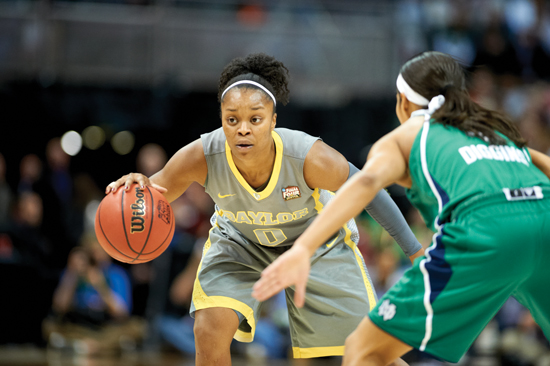
Consistent with the cultural explanation is evidence that some gender differences in personality have changed, over historical time, in keeping with changing social roles and expectations. In particular, a systematic analysis of scores on various tests of assertiveness, given to men and women in the United States between 1931 and 1993, revealed that gender differences in this trait changed over time in keeping with changes in the culture (Twenge, 2001). During the Great Depression and World War II, when women were generally expected to be self-sufficient, personality tests revealed relatively small gender differences in assertiveness. After the war, and through the 1950s and early 1960s, however, women were generally expected to be passive and domestic, and during those years women’s scores on assertiveness tests declined considerably while men’s scores remained relatively constant. Beginning in the mid-1960s, however, women entered the workforce in ever-increasing numbers and took on roles previously considered to be masculine, and their assertiveness scores subsequently increased. In fact, some studies suggest that by the end of the twentieth century women’s average assertiveness scores were as high as men’s (Twenge, 2001).
Another route to assessing the role of culture in male-female personality differences is to examine gender differences cross-culturally. In an analysis of Big Five personality scores for men and women in 55 different countries, David Schmitt and his colleagues (2008) found—contrary to what you might expect—that gender differences in personality were greater in developed, prosperous, egalitarian countries than in relatively undeveloped, poor, traditional cultures. Overall, women tended to score higher than men in neuroticism, extraversion, agreeableness, and conscientiousness, and this difference was significantly greater in countries such as France, the Netherlands, Canada, and the United States than in countries like Ethiopia, Malaysia, Botswana, and Indonesia. How might this finding be explained?
594
Schmitt and his colleagues interpret the results as support for the idea of inherent biological personality differences between men and women. They suggest that in wealthier, more egalitarian countries, where people are freer to choose their own routes in life, men and women choose ways of life that are consistent with and reinforce their inborn personality traits. Consistent with this interpretation is evidence that as women have become more accepted in traditionally male roles in developed countries, women have brought a more feminine orientation to those roles. Women business leaders, for example, are on average more likely to lead through nurturance and encouragement, and to exert greater conscientiousness and less aggressiveness, than men occupying similar positions (Eagly, 2007). Thus, increased freedom of occupational choice in wealthier countries may be accompanied by increased flexibility within each occupational role so that people of either gender can bring their personality strengths to bear rather than modify their personalities to fit the job. This explanation of the cross-cultural findings is speculation, but interesting speculation.
SECTION REVIEW
Personality differences may represent alternative adaptations to life’s variable conditions.
Advantages of Being Different
- Just as diversified investments help protect one’s financial future in a world of unpredictable change, diverse personalities may protect one’s genetic investment.
- Fish (including pumpkinseeds and perch) can be bold or cautious; each tendency has benefits and risks. Such variation is affected by the environment (including the number of other bold or cautious fish present) as well as by heredity.
- Human variations in the Big Five traits can, likewise, be viewed as alternative strategies for survival and reproduction.
- Some individuals are more susceptible to environmental influences than others, often faring the best in highly supportive environments and the worst in nonsupportive environments.
Adapting to the Family Environment
- Siblings raised together may experience quite different environments, for reasons that include chance events, consequences of their own choices, and differences in how they interpret the same occurrences.
- The tendency to exaggerate differences between siblings (sibling contrast) and the tendency for siblings to identify with different parents (split-parent identification) may reduce sibling rivalry and diversify parental investment.
Adapting to One’s Gender
- On average, women score slightly to moderately higher than men on agreeableness, neuroticism, and conscientiousness.
- Apparently because of cultural pressures, some personality characteristics that run counter to gender stereotypes correlate with unhappiness. For example, shy young men are generally less happy than shy young women.
- Both evolutionary and cultural forces may help to account for gender differences in personality. There is evidence that these differences are greater in modern Western cultures than in more traditional cultures.